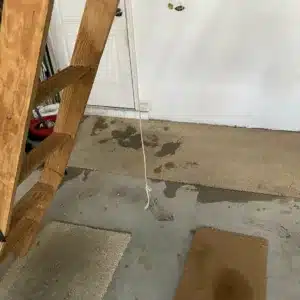Understanding the impact of hurricane windstorm damage on flooring

Hurricane windstorm damage can wreak havoc on homes, destroying various parts of the property, including flooring. The impact of windstorm damage on flooring can be significant, leading to structural issues, water damage, and safety concerns for homeowners. Understanding how hurricanes affect flooring and the steps to take to assess and address the damage is crucial for homeowners in hurricane-prone areas like Florida. Here, we will delve into the impact of hurricane windstorm damage on flooring and provide homeowners with valuable insights on navigating this challenging situation.
Tell us about your claim
Five signs of water damage to look for in your flooring post-storm
After a hurricane windstorm, homeowners must carefully inspect their flooring for signs of water damage. Some common indicators of water damage in flooring post-storm include:
- Discoloration: Look for any changes in color on your flooring, such as dark spots or stains, which could indicate water penetration.
- Warping or Buckling: Flooring materials like wood or laminate may warp or buckle when exposed to excess moisture, causing an uneven surface.
- Soft Spots: Press down on different flooring areas to check for soft spots, as these can signal water damage that has weakened the material.
- Musty Odors: A musty or moldy smell emanating from your flooring can clearly indicate water damage and mold.
- Peeling or Bubbling: If you notice your flooring materials peeling, bubbling, or lifting at the edges, it could be due to water seepage underneath.
It is essential to address water damage promptly to prevent further structural issues and mold growth. If you observe any of these signs in your flooring post-storm, consider contacting a professional public adjuster like Fraser Property & Adjusting in Florida for assistance in assessing and documenting the hurricane windstorm damage for insurance purposes.
The Impact of hurricane windstorm damage on flooring: How to assess and repair flooring damage after a windstorm
The impact of windstorm damage on flooring depends on the severity, measured by the hurricane damage category. It’s necessary to assess and repair flooring damage promptly to prevent further issues. The first step is to carefully inspect the flooring for any visible signs of damage, such as cracks, warping, or lifting. Pay close attention to areas near windows or doors where wind may have caused additional stress.
If there is water damage, thoroughly dry the area to prevent mold growth. Depending on the extent of the damage, you may need to consult with a professional flooring contractor to determine the best course of action. Whether repairing individual planks or replacing the entire flooring, addressing the damage promptly will help restore the integrity of your home’s flooring and prevent any safety hazards.
Documenting the damage for insurance claims
When documenting hurricane windstorm damage on your flooring for insurance claims, thoroughness is essential. Begin by taking clear, detailed photos and videos of the damage from multiple angles. Make sure to capture the extent of the damage, any visible signs of water infiltration, and any structural issues like cracks or warping. It’s also essential to keep a written record detailing the type of flooring affected, the areas impacted, and the date the damage occurred. Additionally, save any receipts, invoices, or estimates related to repairs or replacements. By documenting the damage meticulously, you can provide your insurance company with the evidence they need to process your claim efficiently and accurately.
Steps to take immediately after the damage occurs
As a homeowner facing the impact of hurricane windstorm damage on your flooring, it is crucial to take immediate action to mitigate further harm. Firstly, ensure your safety and that of your family by assessing the structural integrity of your home. If there are any concerns about the stability of the building, evacuate and seek assistance. Next, document the damage by taking photos and videos of the affected areas. This evidence will be valuable when filing an insurance claim. It is essential to contact your insurance provider promptly to report the damage and initiate the claims process.
Consider reaching out to a reputable public adjuster, like Fraser Property & Adjusting, to assist you in navigating the complexities of the insurance claim and ensuring you receive fair compensation for your flooring damage. Lastly, take steps to prevent additional damage, such as placing tarps over exposed areas to prevent water intrusion or securing loose flooring materials. By acting swiftly and diligently, you can protect your property and begin the restoration process effectively.
Hiring a public adjuster for assistance with the claim process
When dealing with the aftermath of hurricane windstorm damage on your flooring, navigating the insurance claim process on your own can be overwhelming. Hiring a public adjuster can greatly assist homeowners during this challenging time. Public adjusters are experts in insurance policies, coverage, and the claims process. They work on behalf of the policyholder, not the insurance company, ensuring that you receive the maximum compensation you are entitled to for the damages incurred.
A public adjuster can assess the extent of the damage to your flooring, help document the losses, negotiate with the insurance company on your behalf, and expedite the claims process, providing you with peace of mind and allowing you to focus on restoring your home. When selecting a public adjuster, choose a reputable and licensed professional with experience handling hurricane windstorm damage claims to ensure a smooth and successful recovery process.
Tips for preventing future flooring damage from hurricanes
To prevent future flooding damage from hurricanes, consider these tips:
1. Choose water-resistant flooring materials like tile, vinyl, or concrete for areas prone to flooding.
2. Elevate appliances and furniture to avoid water damage during floods.
3. Install hurricane shutters or impact-resistant windows to protect your home from flying debris.
4. Regularly inspect and maintain your roof to prevent leaks that could damage your flooring.
5. Have a professional assess your home’s foundation for stability and make necessary repairs to prevent structural damage during storms. By taking these proactive measures, you can help safeguard your flooring and minimize potential hurricane windstorm damage.
Steps to protect your home’s flooring during hurricane season
To protect your home’s flooring during hurricane season, start by securing loose rugs and carpets to prevent them from becoming projectiles in high winds. Consider investing in waterproof sealants or coatings for your flooring to minimize water damage in case of flooding. If possible, elevate furniture and appliances off the ground to prevent water damage to the flooring underneath. Additionally, plan to quickly remove excess water from your home in a hurricane-related flood to minimize damage to your flooring. Regularly inspect your flooring for any signs of wear or damage, and address any issues promptly to prevent further deterioration during a hurricane. These proactive steps can help protect your home’s flooring from the devastating impact of hurricane windstorm damage.
The best flooring options for hurricane-prone areas
Living in hurricane-prone areas requires homeowners to consider the type of flooring they choose carefully. Regarding withstanding the impact of hurricane windstorm damage, some of the best flooring options include ceramic tile, luxury vinyl, and concrete. Ceramic tile is a durable, water-resistant choice that can withstand high winds and potential flooding. Luxury vinyl is another excellent option, as it is resilient to scratches, dents, and water damage. Concrete flooring, while not the most aesthetically pleasing, is highly durable and can withstand the force of hurricane winds. These flooring options give homeowners in hurricane-prone areas peace of mind, knowing that their floors are less likely to sustain significant damage during a storm.
For additional information, follow the links below:
How to Protect Your Roof from Hurricanes and Other Damages
A Step-by-Step Guide to What to Do After a Hurricane
What is a Public Adjuster and How Can They Help You?
How to Avoid Common Mistakes When Filing a Property Damage Claim
Flooding and Hurricane Damage To Wood Floors
Stone and Tile Floors Damaged from Hurricanes and Floods (tilepro-usa.com)

